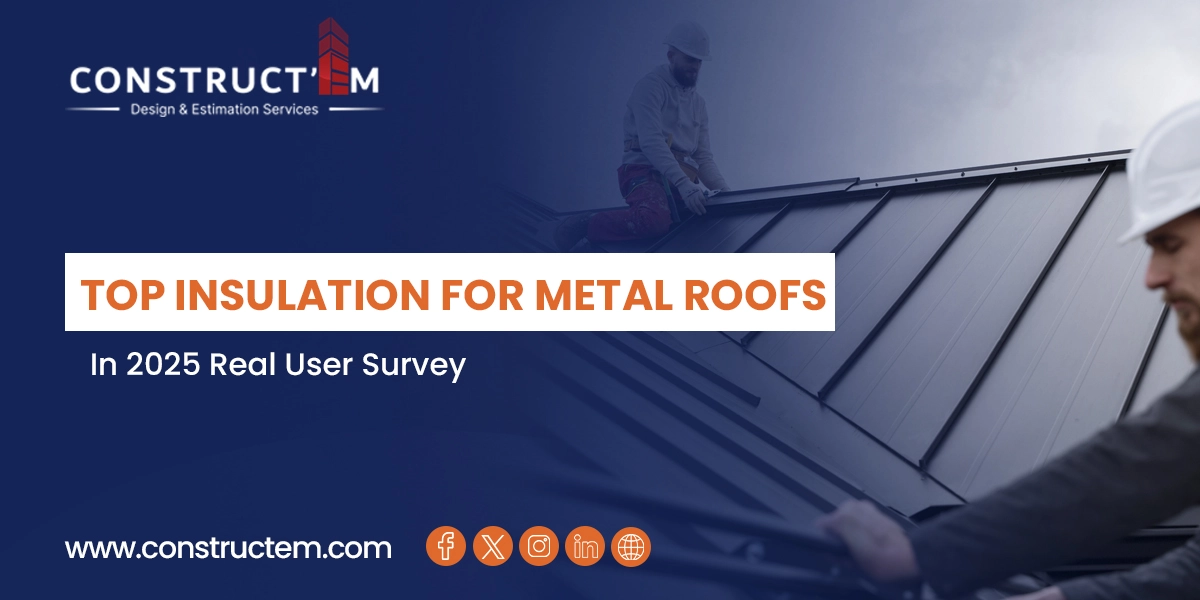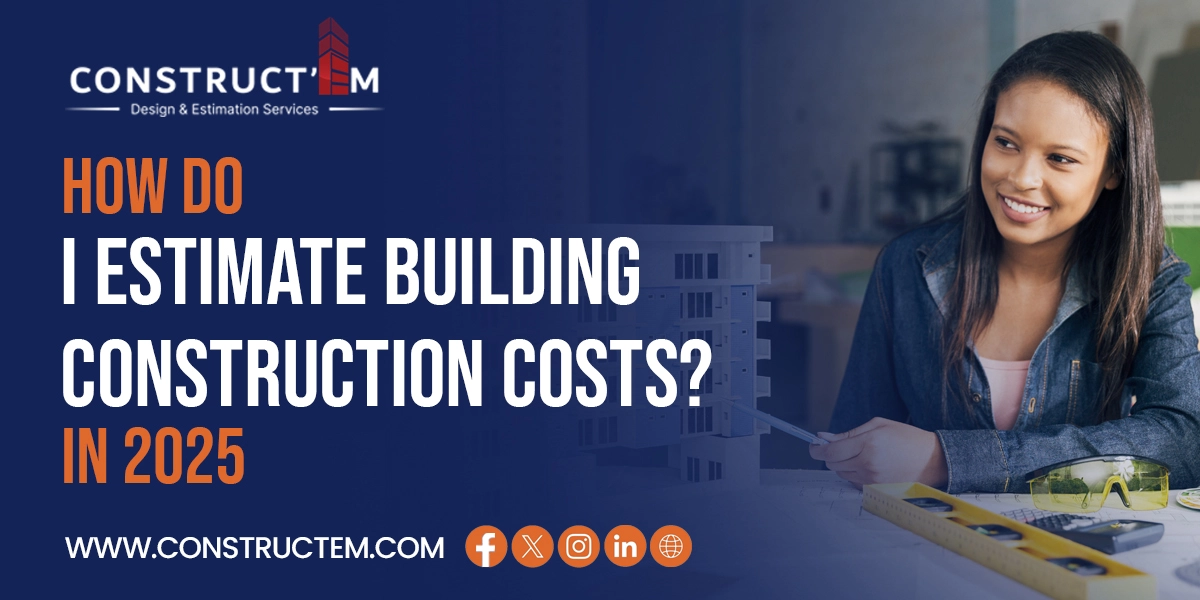

Here’s a surprising fact: the average cost of building a home in the USA has gone up by over 12% in the past couple of years. That means even the smallest budget misstep can lead to unexpected problems later.
If you’re planning a new build or managing a construction project in 2025, accurate cost estimation isn’t just helpful. It’s crucial. There’s a lot to juggle: material rates, labor costs, permits, supply delays, and those sneaky little expenses that always show up when you least expect them.
This guide breaks down how to estimate building construction costs the right way. We’ll talk about what affects pricing, how technology is changing cost predictions, and when it actually makes sense to hire professionals for construction estimation.
A solid estimate isn’t just a set of numbers, it’s your safety net. In 2025, with unpredictable supply chains and shifting labor rates, precision is what separates smooth projects from stressful ones.
Here’s why accuracy matters more than ever:
Accurate construction estimation keeps your finances balanced and your stress levels low and that’s half the battle in any build.
Materials take up a huge part of your budget. Imported finishes or specialized materials will naturally raise costs, while local alternatives can give you great quality without breaking the bank. In 2025, prices shift fast. It’s smart to keep an updated list of your suppliers.
Labor pricing changes depending on where you build and who you hire. Skilled workers are in demand, and that means higher wages in many regions. Make sure your construction estimation reflects current rates instead of relying on last year’s numbers.
A bigger or more complex design means more time, materials, and money. Multi-floor homes or unique designs add extra cost layers. Estimating these correctly helps you set a practical budget right from the start. If you’re curious about how project size actually affects build timelines, check out a detailed post on How Long Does It Take to Build a House? Survey of 2025.
This one often slips through the cracks. Local codes, inspections, and permits all add up, and skipping them from your estimate can cause unnecessary financial gaps and project delays.
This is the old-school way. Manually listing every material, labor hour, and piece of equipment your project will need. It’s slow, yes, but still one of the most dependable ways to understand your full cost picture.
Technology has changed the game. Cost-estimation software can instantly calculate material quantities, labor costs, and timelines. Many programs also allow you to test different project scenarios so you can adjust your budget before making big decisions.
Looking back helps you look ahead. Many contractors now analyze data from past projects, and some even use AI tools that study previous results to make predictions more accurate. In 2025, this combination of data and technology gives estimators a serious edge.
Sometimes, your project is simply too large or detailed for DIY estimating. That’s where Construction Cost Estimating Services in the USA step in.
Here’s what they bring to the table:
Hiring professionals can save both time and money. They don’t just crunch numbers but help you plan smarter and avoid expensive surprises.
Doing these small things ensures your construction estimation stays accurate and realistic from start to finish.
Technology is no longer optional in construction estimation. From digital dashboards to AI-driven cost analysis, these tools make your numbers sharper and faster.
Here’s what makes them powerful:
Even if you’re not a tech expert, these tools can help you stay organized and confident about where your money’s going.
Avoiding these pitfalls can save you from running into financial trouble halfway through your project.
Estimating construction costs in 2025 might seem complex, but it’s really about preparation and precision. With updated pricing data, smart use of technology, and guidance from Construction Cost Estimating Services in the USA, you can create an estimate that’s both realistic and reliable.
Good construction estimation isn’t just about keeping expenses in check. It’s what keeps your project moving forward smoothly. Let ConstructEm help you plan smart, stay flexible, and keep your 2025 build right on budget from blueprint to final nail.
Start by listing your materials, design, and labor needs. For a clearer breakdown, tools and experts at ConstructEm can help you calculate costs that match real 2025 market rates.
Prices for materials, fuel, and labor shift all the time. Even a small delay in ordering can make costs go up or down. It’s totally normal in today’s market.
It’s great for quick math, but nothing beats a professional’s eye. That’s why many builders use both smart tools and expert estimators like those at ConstructEm for accuracy.
Plan ahead, confirm material prices early, and always leave a 10% cushion for surprises. Staying organized saves you from last-minute shocks.
© Construct'EM - 2025. All rights reserved.